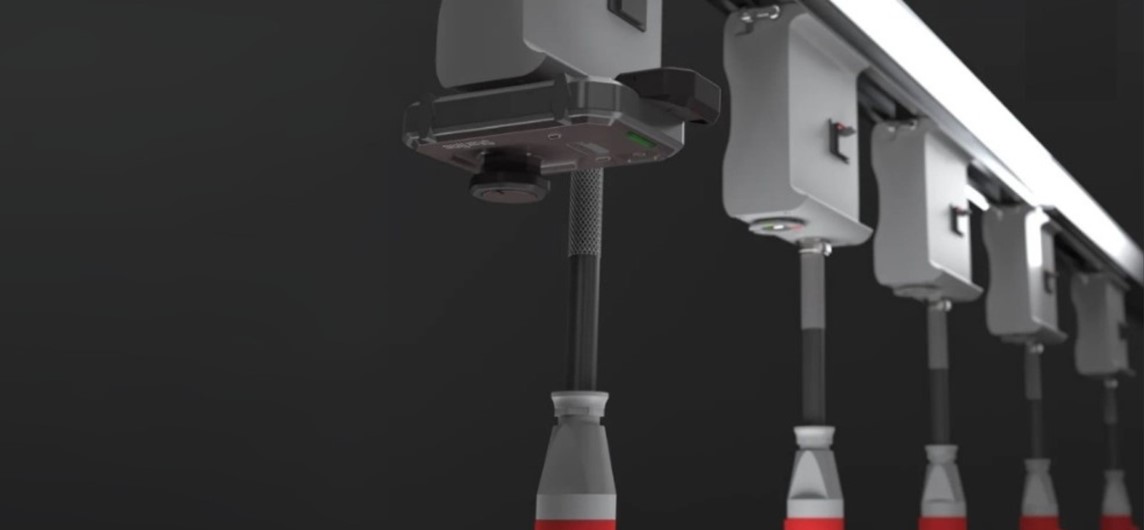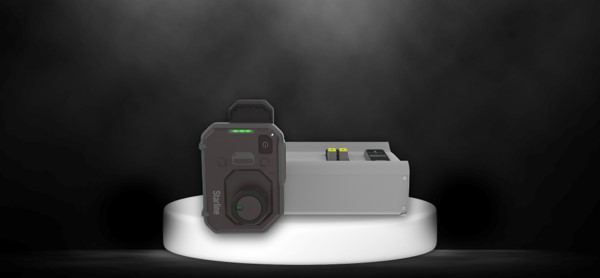Power Meets Safety: Reducing Arc Flash Risk in High-Density Data Centers
Artificial intelligence (AI) is transforming the energy requirements of data centers
With the IEA reporting in its recent Energy and AI report that electricity demands from data centers worldwide are expected to double by 2030 to approximately 945 terawatt-hours (TWh), with AI being identified as the most significant driver of this increase. For data center operators, this increased focus on higher power densities and the power distribution required to supply it brings key safety challenges. As power density increases, so does the level of incident energy, increasing the risk to personnel responsible for power maintenance and installation from fault currents and arc flashes.

Reducing Arc Flash Risk in High-Density Data Centers
At the rack level, we are seeing this increase in power demand translate into rack densities of up to 80 kW, with Nvidia’s GB200 chip requiring as much as 120 kW. These increased power loads result in elevated energy levels, which significantly heighten the risk of arc flashes—explosive releases of energy caused by electrical faults. An arc flash occurs when electrical current jumps (or arcs) from one conductor to another, releasing energy that is four times hotter than the surface of the sun. Therefore, the question arises: how can data centers meet the power demands of AI-driven applications without compromising safety?
Let’s explore five strategies that help mitigate the risk of arc flash in high-density environments.
1. Install Overhead Power Distribution Architecture
Traditional raised-floor power distribution using power distribution units (PDUs) or distribution cabinets, and underfloor cabling is quickly becoming obsolete. These legacy systems often force electricians to work on live equipment, increasing the chance of arc flash incidents caused by accidental contact or dropped tools.

Overhead busway systems offer a safer alternative. These ceiling-mounted track busways deliver power using copper busbars enclosed in an aluminium shell and plug-in units. Crucially, the plug-in units feature local circuit disconnects that allow workers to power down the unit before installation or removal, drastically reducing arc and shock hazards. Additionally, because busways eliminate exposed PDUs, distribution cabinets, and circuit breakers, as well as floor-level cabling, they allow for better airflow and easier access, ideal for today’s high-density environments.
With proper installation, busways also maintain safe approach boundaries as defined by EN 50110-1 and IEC 61482, the European standards for live working and arc flash protection, helping protect anyone working nearby from shock and blast injuries.
2. Conduct Regular Arc Flash Hazard Studies
Arc flash hazard studies are not only a best practice for safety, but they are also often mandated for compliance with EU regulations and insurance risk assessments, including adherence to IEC/EN safety standards. These studies help identify the potential risk for arc flash incidents throughout your power distribution network and provide a plan for necessary corrective actions.
A comprehensive study should include:
- Data collection on all components of your power and cooling systems.
- Electrical system modelling to create a layout of your system.
- Short-circuit current analysis to identify potential fault currents.
- Coordination planning for the strategic placement of fuses and breakers.
- Incident energy calculations to identify PPE needs.
As your data center scales, revisiting these studies at least every two years (or after major equipment changes) is essential. They don’t just protect workers—they can lower insurance costs and even shield operators from legal liability in the event of an incident.
3. Utilizing Overcurrent Protection Devices
In the event of a short circuit, response time is everything. The faster you can stop a fault current, the lower the risk of catastrophic arc flash. The two main types of current-limiting devices are fuses and circuit breakers.
Fuses are single-use devices that interrupt fault currents faster than breakers. In fact, a fuse might clear a fault in a tenth of a second, three times faster than some breakers. That fraction of a second can mean the difference between a minor outage and a life-threatening explosion.
For optimal safety, data centers should:
- Use fuses at the end feeds of busways
- Include fuses in busway plug-in units
- Install fuses in the rack PDUs
When integrated into a selective coordination strategy—where the closest fuse to a fault trips first—fuses can also limit the impact of a fault to a single rack instead of an entire row, maintaining uptime while protecting personnel, as recommended under IEC 60947-6-1 and IEC 60269 standards, which guide fuse-based protection and coordination in low-voltage systems.
4. Prioritize PPE Based on Incident Energy Levels
When live work is unavoidable, PPE must meet the risk levels determined through incident energy analysis, as required under standards such as IEC 61482 and EN ISO 11612, which define protection against thermal arc hazards and heat.
There are two ways to determine PPE needs:
- Incident Energy Analysis (highly recommended): Analyses system arc flash boundaries and incident energy levels for precise PPE selection.
- PPE Category Method: Uses predefined tables that list PPE based on incident energy exposure (can lead to over- or under-protection).
Using a PPE category table without precise data can lead to unnecessary cost and discomfort. For example, if a technician overestimates the incident energy at 14 cal/cm² (≈ 58.6 J/cm²), they may be required to wear a heavier arc flash suit when a lighter, more appropriate option would suffice. To ensure both safety and efficiency, it is strongly recommended that PPE selection be based on a professionally conducted arc flash analysis in line with IEC 61482 standards.
5. Leverage New Arc Flash Mitigation Technologies
Emerging technologies offer new ways to reduce risk, often without even touching live equipment.

Remote Plug-In Actuators
Devices like the Starline’s Remote Plug-In Actuator enable technicians to engage or disengage busway plug-in units from a safe distance, away from the incident energy area, via Bluetooth or fiber-optic connectivity. This is especially valuable in high-density or AI environments where downtime isn’t an option; RPAs help limit human exposure to energized areas.
Infrared (IR) Window Scanning
IR windows installed in busway end feeds enable thermal imaging without requiring the equipment to be opened. Operators can monitor for hot spots, phase imbalances, or faulty components—safely and in real-time.
Temperature Sensor Monitoring
Sensor-based systems, such as Starline’s M70 Critical Power Monitor (CPM), provide live temperature data at the end feed, plug-in unit, or as a standalone device. Integrating this data into your DCIM or BMS helps detect issues before they lead to arc flash events.

A Safer, Smarter Future for Data Centers
As AI continues to push power densities to record levels, data center operators must balance the need for increased density and scalability with that of personnel safety. Whilst arc flash incidents can’t be eliminated, they can be better controlled and reduced by investing in overhead busways, conducting regular arc flash studies, utilizing fast-acting fuses, making data-driven PPE decisions, and deploying smart monitoring tools. Powering AI should never come at the cost of compromised safety. Data center operators that invest in a safe data center environment and protect their personnel, improve uptime, and support growth with confidence.
To learn more about Starline’s power distribution solutions and safety innovations, visit https://www.legrand.com/datacenter/gb-en/brands/starline.
























 Canada
Canada
 Latin America (English)
Latin America (English)
 Latin America (Espanol)
Latin America (Espanol)
 USA
USA
 China
China
 India
India
 Japan
Japan
 Republic of Korea
Republic of Korea
 South East Asia (English)
South East Asia (English)
 Austria
Austria
 Belgium
Belgium
 France
France
 Germany
Germany
 Italy
Italy
 Netherlands
Netherlands
 Spain
Spain
 Switzerland
Switzerland
 Turkey
Turkey
 UK
UK
 Africa (english)
Africa (english)
 Africa (français)
Africa (français)
 Middle East (english)
Middle East (english)
 Australia
Australia
 New Zealand
New Zealand